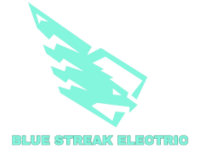Residential Generators
Having a standby generator installed at your home is essential for ensuring uninterrupted power supply during outages, which can occur due to storms, natural disasters, or utility failures. A generator provides peace of mind by keeping critical systems like heating, cooling, refrigeration, and medical devices running, protecting your family’s comfort and safety. It also prevents food spoilage, maintains internet connectivity, and supports home security systems, minimizing disruptions to daily life. Additionally, a standby generator can add value to your property and be a crucial resource during prolonged power outages, ensuring your home remains functional and habitable in all circumstances.
Our Process:
Assessment and Planning:
- Determine power requirements for your home to select the appropriate generator size.
- Identify a safe and accessible location for the generator, adhering to local codes and regulations.
- Obtain necessary permits for installation.
Prepare the Site:
- Clear and level the area where the generator will be placed.
- Install a concrete pad or gravel base to provide a stable foundation.
Install the Generator:
- Position the generator on the prepared site, ensuring proper clearance from walls and windows.
- Secure the unit to the base to prevent movement.
Electrical Connections:
- Connect the generator to the transfer switch, which controls the transition between utility and backup power.
- Ensure all wiring is properly installed and complies with local electrical codes.
Install a weatherproof conduit for outdoor connections.
Fuel Connection:
- Connect the generator to the fuel source (e.g., natural gas or propane).
- Test for leaks and ensure the fuel supply meets the generator’s specifications.
Install the Transfer Switch:
- Mount the transfer switch near the main electrical panel.
- Connect it to the home’s electrical circuits based on priority needs.
System Testing:
- Perform a comprehensive test of the generator and transfer switch to ensure seamless operation.
- Simulate a power outage to verify the system automatically switches to generator power.
Final Inspection:
- Verify compliance with local building and safety codes.
- Have the system inspected by relevant authorities if required.
Owner Training and Maintenance:
- Educate the homeowner on operating the generator and performing basic maintenance.
- Provide a maintenance schedule for routine inspections and servicing.

Free ESTIMATES
Let Blue Streak Electric give you a free estimate on your next project.
